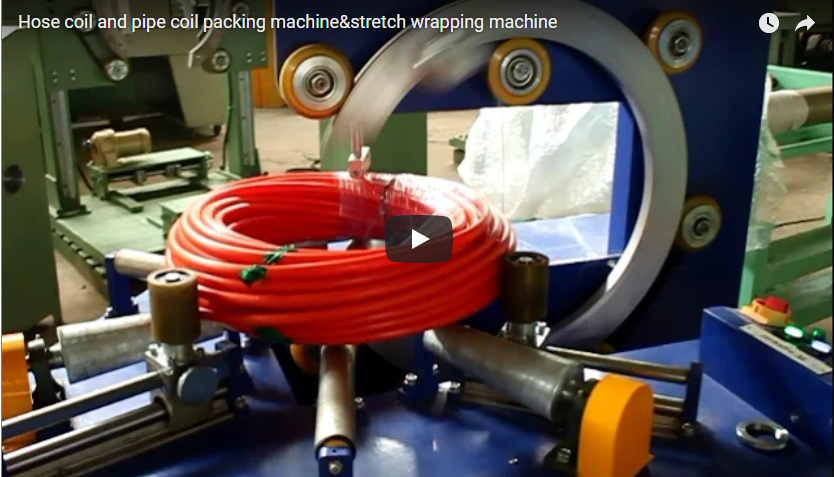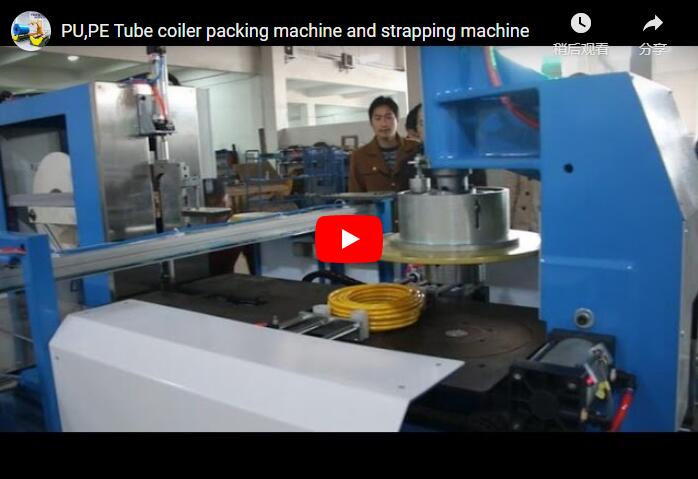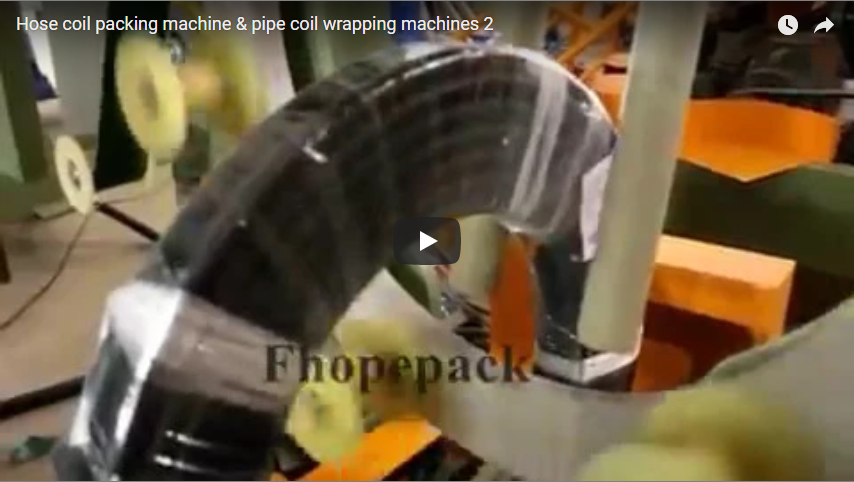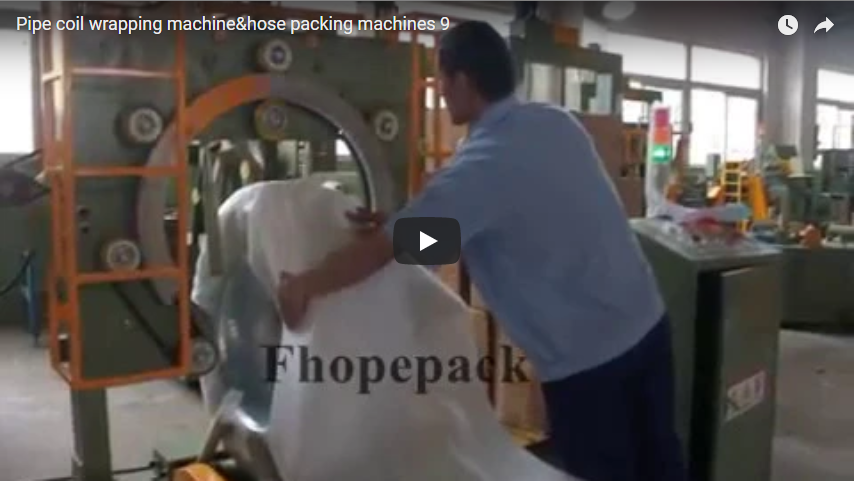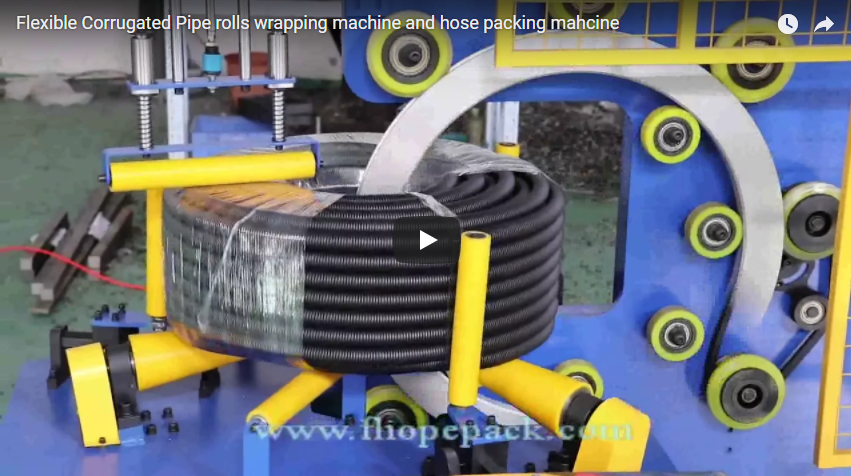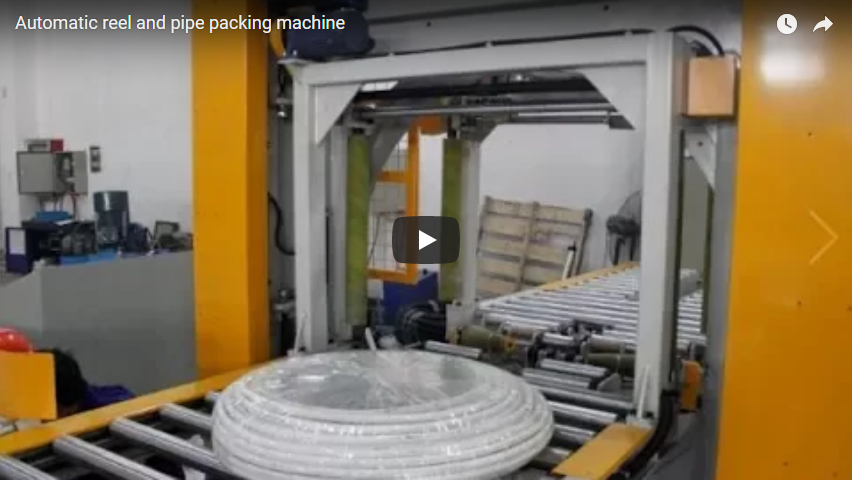Optimizing Corrugated Hose Packaging: A Technical Guide to Coil Wrapping Machines
Corrugated hoses, essential components in various industrial applications, require robust packaging to ensure their integrity during transport and storage. Manual wrapping methods are often time-consuming, inconsistent, and labor-intensive. Automated coil wrapping machines offer a specialized solution, providing efficient, uniform, and protective packaging specifically tailored for corrugated hose coils. This guide delves into the operational principles, technical specifications, and practical considerations associated with these machines.
1. Operational Principles of Corrugated Hose Coil Wrappers
These machines typically employ an orbital wrapping technique. The core process involves passing the corrugated hose coil through a rotating ring that dispenses a wrapping material, most commonly stretch film.
- Loading: The hose coil is placed onto the machine's infeed conveyor system, often consisting of rollers or a belt.
- Positioning & Clamping: The coil is automatically conveyed to the wrapping station. Depending on the configuration, clamping devices or stabilizing rollers may engage to hold the coil securely during wrapping.
- Wrapping Cycle: A rotating ring, equipped with a material dispenser (shuttle), orbits around the coil. The wrapping material (e.g., LLDPE stretch film) is fed from the shuttle and applied spirally around the hose coil as it either rotates or is indexed through the ring. Tension control systems ensure the film is applied tightly and uniformly.
- Cutting & Sealing: Upon completion of the programmed wrap cycles, the material is automatically cut and secured (e.g., via heat sealing or a wipe-down mechanism).
- Unloading: The wrapped coil is conveyed out of the wrapping station, ready for removal or further processing.
2. Key Technical Specifications and Parameters
When evaluating a coil wrapping machine for corrugated hoses, several technical parameters are critical:
- Coil Dimensions:
- Inner Diameter (ID): Minimum and maximum acceptable range.
- Outer Diameter (OD): Minimum and maximum acceptable range.
- Width/Height: Minimum and maximum acceptable range.
- Coil Weight: Maximum load capacity of the conveyor and wrapping station (e.g., up to 200 kg or more).
- Wrapping Materials:
- LLDPE Stretch Film: Most common; provides containment, stability, and protection from dust/moisture. Widths typically range from 50mm to 100mm for hose applications. Film thickness varies (e.g., 17-35 µm).
- VCI Paper/Film: Incorporates Vapor Corrosion Inhibitors for metal components within or attached to the hose.
- PE Film/Paper/Woven: Other materials used depending on protection requirements.
- Machine Performance:
- Ring Speed: Rotational speed of the wrapping ring (e.g., 50-150 RPM), dictates cycle time.
- Conveyor Speed: Adjustable speed of the transport system (e.g., 5-15 m/min).
- Overlap Control: Programmable setting for the degree of overlap between successive wraps.
- Control System: Typically PLC (Programmable Logic Controller) based with an HMI (Human-Machine Interface) touch screen for parameter setting, recipe storage, and diagnostics.
3. Visual Demonstration: Corrugated Hose Coil Wrapping
The following video illustrates the typical operation of a coil wrapping machine handling corrugated hose products:
Video Caption: Demonstration of an automated wrapping machine applying stretch film to a corrugated hose coil.
4. Configuration Options and Customization
To meet specific application needs, machines can be configured with various options:
- Feeding/Loading: Manual loading, integration with overhead cranes, or fully automated robotic loading systems.
- Top Press Device: Pneumatically or electrically actuated device to stabilize lightweight or unstable coils during wrapping.
- Safety Systems: Light curtains at entry/exit points, safety fencing, emergency stop buttons compliant with safety standards.
- Conveyor Types: Powered roller conveyors, belt conveyors, or V-shaped rollers designed for coils.
- Integration: Ability to connect with upstream coiling machines and downstream palletizing or labeling systems.
5. Selecting the Right Machine: Practical Considerations
Choosing the appropriate machine involves evaluating several factors beyond basic specifications:
- Production Volume: Match the machine's cycle time and throughput capabilities to your output requirements.
- Coil Variability: Ensure the machine can handle the full range of your hose coil dimensions and weights.
- Material Handling: Consider how coils will be loaded onto and unloaded from the machine.
- Operating Environment: Assess space requirements, power availability, and any environmental constraints (e.g., dust, temperature).
- Operator Skill & Maintenance: Evaluate the ease of operation, training requirements, accessibility for routine maintenance (lubrication, cleaning, part replacement), and availability of technical support/spare parts from the vendor.
6. Benefits of Automated Wrapping for Corrugated Hoses
Implementing an automated coil wrapping solution provides significant advantages:
- Enhanced Product Protection: Consistent tension and full coverage shield hoses from dust, moisture, abrasion, and potential handling damage.
- Improved Package Stability: Tightly wrapped coils are easier and safer to handle, stack, and transport.
- Material Efficiency: Precise control over film stretch and overlap minimizes material consumption compared to manual methods.
- Labor Optimization: Reduces manual labor requirements, freeing up personnel for other tasks and decreasing ergonomic risks.
- Professional Appearance: Uniformly wrapped coils present a consistent and professional brand image.
- Process Consistency: Ensures every coil is wrapped to the same standard, eliminating variability associated with manual wrapping.
7. Maintenance and Troubleshooting Insights
Regular maintenance is key to reliable operation:
- Cleaning: Keep sensors, rollers, and the ring area free from dust and film debris.
- Lubrication: Follow the manufacturer's schedule for lubricating bearings, chains, and moving parts.
- Inspections: Regularly check the film carriage, tensioning system, cutter mechanism, and safety devices for wear or damage.
- Common Issues:
- Film Breaks: Often caused by incorrect tension, sharp edges on the coil, or poor film quality.
- Uneven Wrapping: May result from improper coil positioning, inconsistent conveyor speed, or issues with the ring rotation. Consult the machine manual for troubleshooting specific error codes displayed on the HMI.
Conclusion
Automated coil wrapping machines are indispensable tools for effectively packaging corrugated hose coils in industrial settings. By understanding their operational principles, key specifications, and available customizations, businesses can select and implement solutions that significantly improve packaging quality, operational efficiency, and product protection. Proper selection, operation, and maintenance are crucial for maximizing the return on investment and ensuring reliable performance.
For further details on coil packaging solutions:
https://www.fhopepack.com/Coil_packing_machine.html
Contact for inquiries:
info@fhopepack.com

